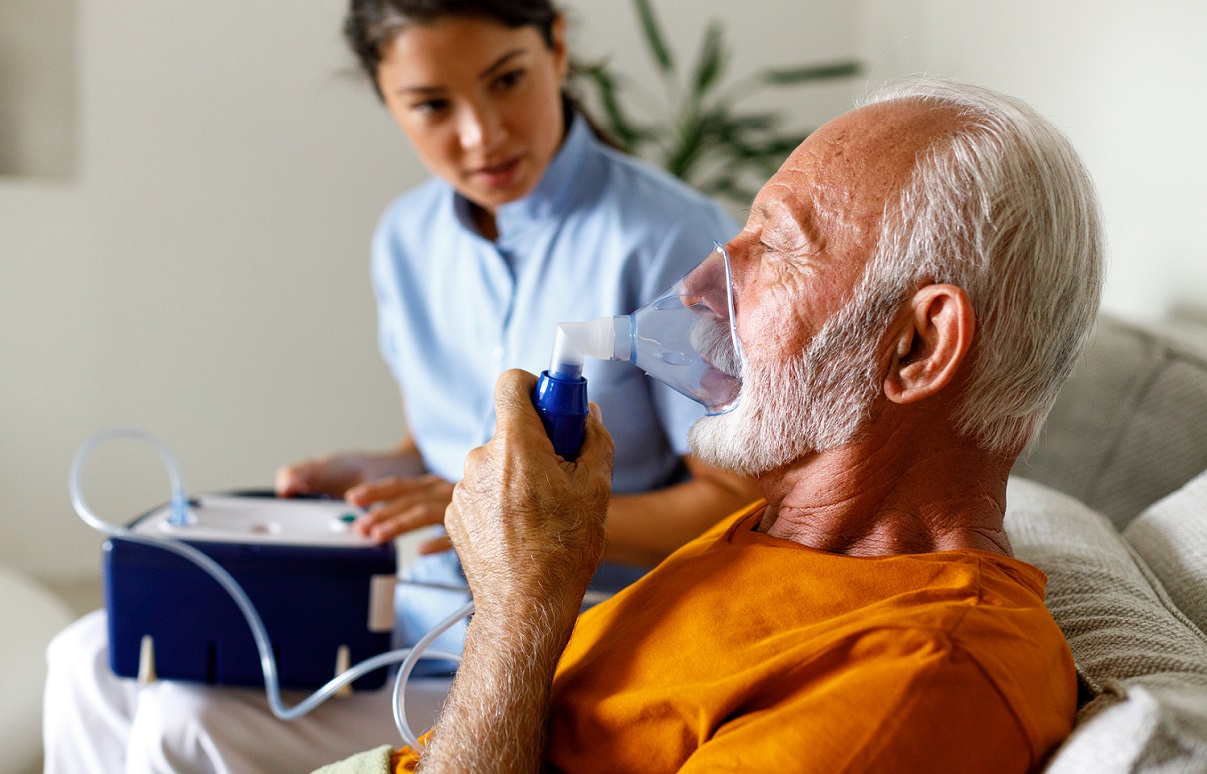Emphysema, a progressive form of chronic obstructive pulmonary disease (COPD), can severely limit...
Read More
Chronic obstructive pulmonary disease (COPD) silently affects millions worldwide, posing significant challenges to breathing and quality of life. Defined by a progressive airflow obstruction in the lungs, COPD encompasses several lung conditions, including emphysema and chronic bronchitis.
Understanding COPD, its causes, symptoms and treatments is essential for managing and preventing its impact on health. Learn more about COPD from Inspira Medical Group’s Nicholas Roy, DO.
Dr. Roy: COPD, a progressive lung disease, primarily obstructs airflow by causing inflammation, narrowing airways and producing excess mucus. Over time, COPD can worsen lung function.
Symptoms of COPD include shortness of breath, coughing, wheezing, chest tightness, frequent respiratory infections, fatigue and unintentional weight loss. These symptoms can vary in severity and may worsen over time, impacting daily activities and quality of life.
Dr. Roy: COPD is primarily caused by long-term exposure to irritants that damage the lungs and airways. The most common cause is cigarette smoke, but exposure to other irritants such as air pollution, occupational dust and chemicals can also contribute to the development of COPD.
A genetic predisposition to certain lung conditions and respiratory infections, such as recurrent pneumonia or severe cases of influenza, can cause lung damage over time, increasing the risk of developing COPD or worsening existing symptoms.
Dr. Roy: COPD is diagnosed through a combination of medical history, physical examination, lung function tests (spirometry) and imaging tests like chest X-rays or CT scans. Spirometry measures how much air you can exhale and how fast you can exhale it, helping to determine the severity of airflow obstruction.
Dr. Roy: While COPD is incurable, treatments can help manage symptoms and slow disease progression. Treatment options include:
Dr. Roy: Life expectancy for COPD patients can vary depending on factors such as the severity of the disease, the presence of other medical conditions and lifestyle factors like smoking. It's common for individuals with COPD to live well into their 70s, 80s or 90s, especially if their condition is mild and they don't have concurrent health issues like heart disease or diabetes. However, complications such as pneumonia or respiratory failure can shorten life expectancy.
The important thing to remember is that COPD is not a death sentence, and early diagnosis and intervention can help slow disease progression and maximize life expectancy.
Inspira Health pulmonologists can help you manage your COPD and treat symptoms that interfere with healthy lung function. Learn more about lung and respiratory health.

Emphysema, a progressive form of chronic obstructive pulmonary disease (COPD), can severely limit...
Read More
Mouth taping is a practice that promotes nasal breathing during sleep, which may improve sleep...
Read More
Walking pneumonia is a mild but disruptive form of pneumonia with symptoms like a lingering cough...
Read More